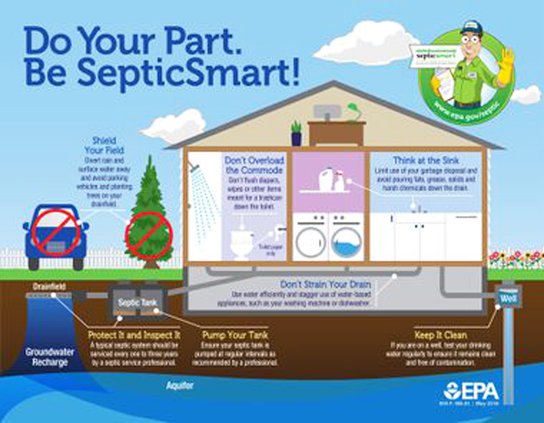CRAWFORD COUNTY - The Crawford County Land Conservation Committee/Land Use met on Tuesday, May 11. At that meeting, Zoning and Sanitation Technician Jake Shedivy informed the committee that the county’s septic system compliance program will be shifting gears from encouraging compliance to late fees and prosecution.
The county kick-started their new septic compliance program in 2018 after the state legislature changed statutory language governing compliance from “should” to “shall.” County septic system owners were given three years to work to address any problems with their systems, set up a regular inspection and pumping schedule, and access to Wisconsin Fund dollars for lower income residents to help fix or upgrade their system.
“We’re about one-third of the way done with ensuring compliance with our ordinance, with about two-thirds outstanding,” Shedivy told the committee. “We’ll be sending out another batch of postcards soon with a response required by the end of the year, and then we’ll start with the process of assessing late fees in the first year, and prosecutions after that,”
Shedivy said that other neighboring counties reported that they had to resort to prosecution when they were first kicking their programs off, and that it is “part of the growing pains.”
Shedivy reports that the legislature continues to move legislation to extend the Wisconsin Fund through the process, and he is hopeful that it will be passed and signed into law. He reported that part of the discussion is that they are considering expanding the program to include systems built as late as 1988.
Surveyor Richard Marks reported to the committee that the legislature had recently passed a law that affects property easements that are more than 40 years old.
“If an easement to a property is more than 40 years old, it will be dropped now unless the property owner take the step of filing the easement again with the register of deeds,” Marks said. “The law applies only to easements on private property, and not to those on public property.”
Soil and Water
In the Soil and Water Concerns part of the committee’s agenda, County Conservationist David Troester provided a report. Troester told the committee that Crawford County had collected a total of 94 samples for the Driftless Area Water Study (DAWS) well water testing initiative.
“We gave out more than 100 bottles, and even though we had a few cancellations, we received samples in other containers such as State Lab of Hygiene bottles,” Troester said. “If we were able to accept the samples, we did.”
Troester said that Vernon County collected 82 samples, Richland County 69, and the Tainter Creek Watershed Council collected 25. That means that a total of 270 water samples were driven up to the lab in Stevens Point by a volunteer from Crawford Stewardship Project. Troester said that a virtual meeting will be held on June 8 to present the high level results of the DAWS water testing effort.
Troester also said that he had attended meetings of the Crawford County Deer Advisory Council to represent the interests of agricultural producers. He said that after a record number of spring survey responses in 2020, only 91 responses had been received this year. He said that in general, survey respondents favored holding the Holiday Hunt.
As far as prevalence of Chronic Wasting Disease in the county, Troester reported that there had been a considerable uptick in the number of cases in the last few years. He said that the total number of samples submitted for analysis had remained about the same, and that though the number is increasing, it is still not considered to be “high prevalence.”
Troester reported that his department has received feedback on their proposed plans to fix some structural issues with the Blackhawk Kickapoo Dam on Johnstown Road. The plans call for the installation of some tiles at the seam with the hillside and the spillway in order to keep spring moisture off the dam. Troester said that he and NRCS Engineer Mike Dreschmeier had not yet been able to connect about the project, and that the next step will be to apply for a dam maintenance grant.




